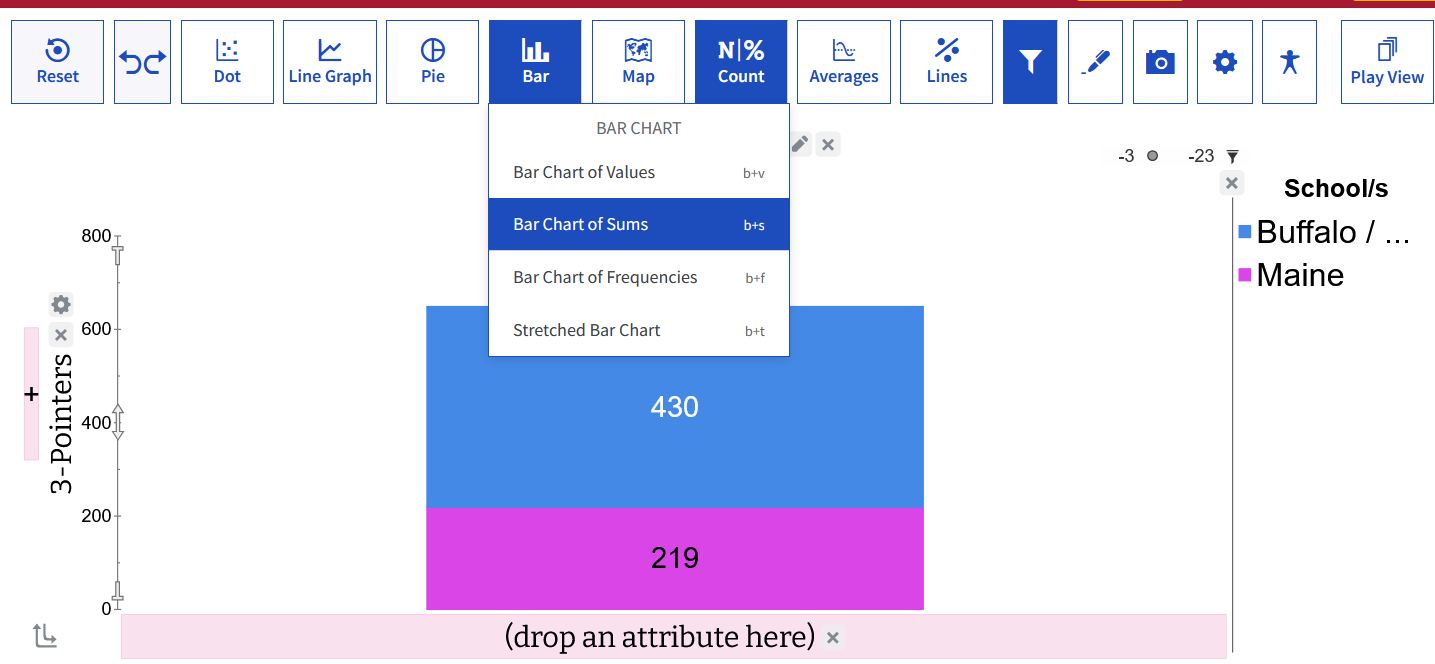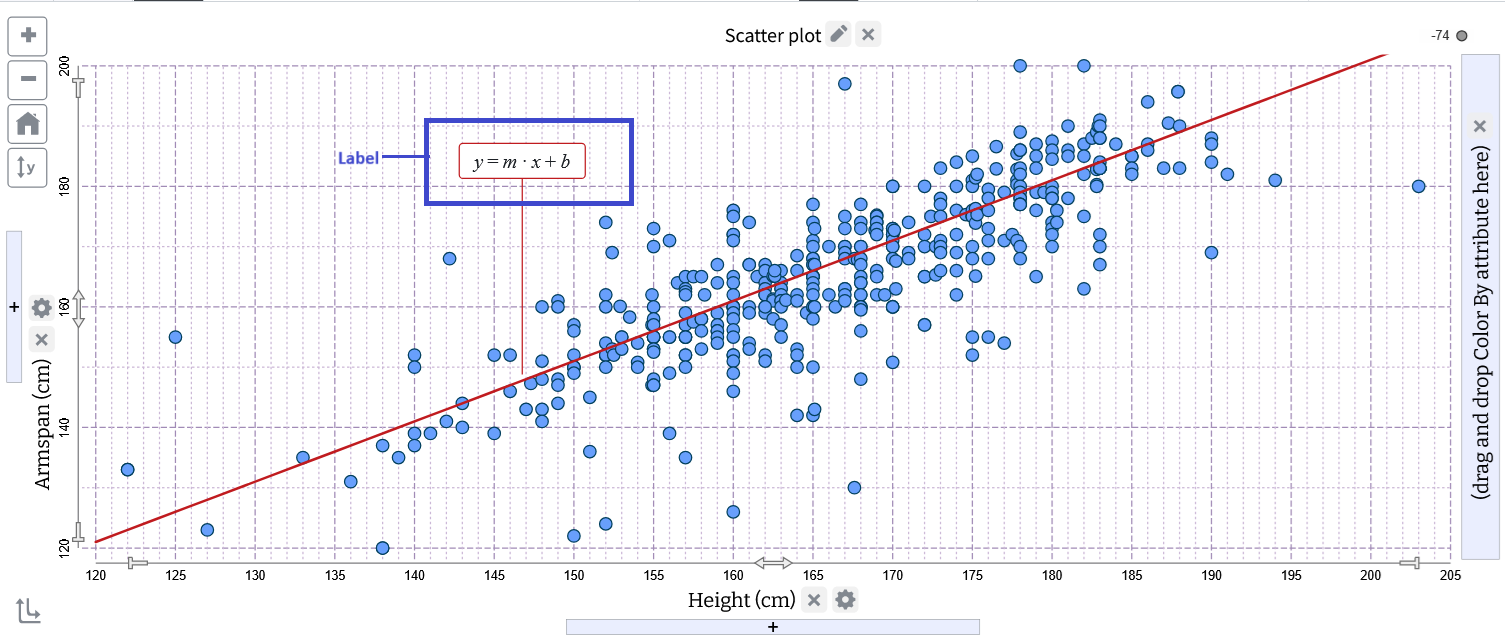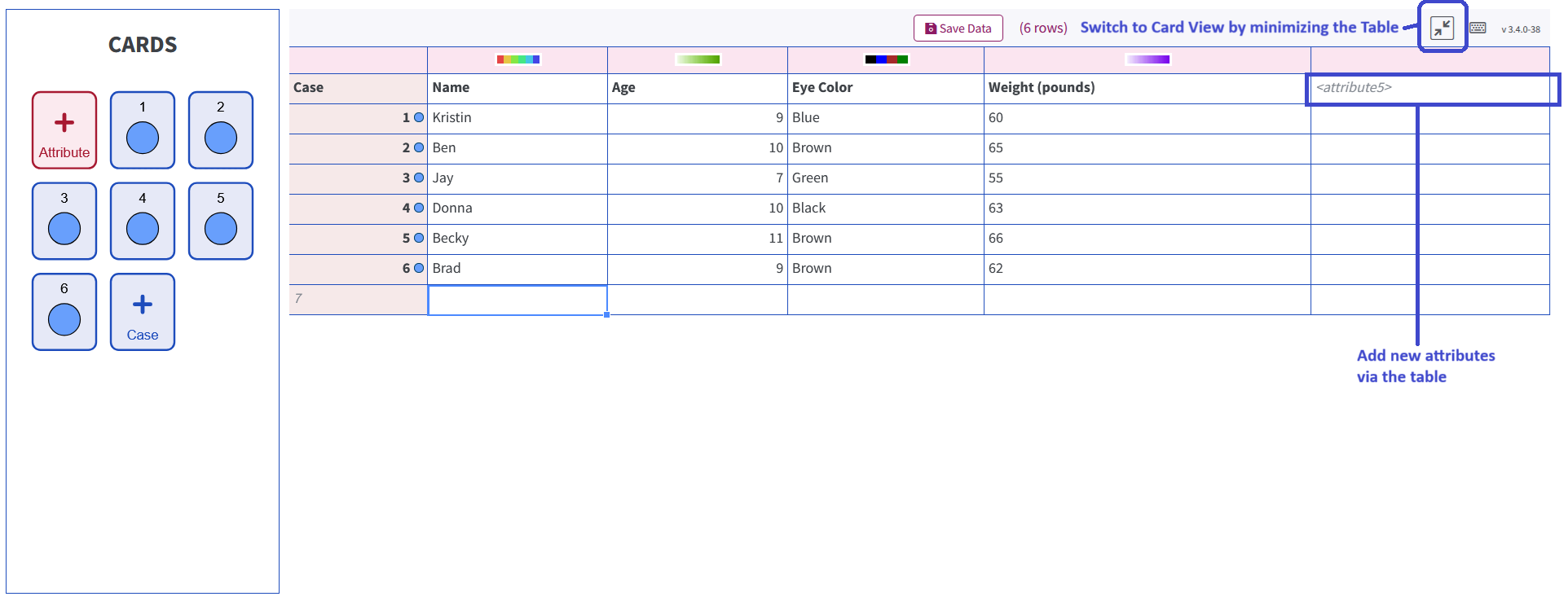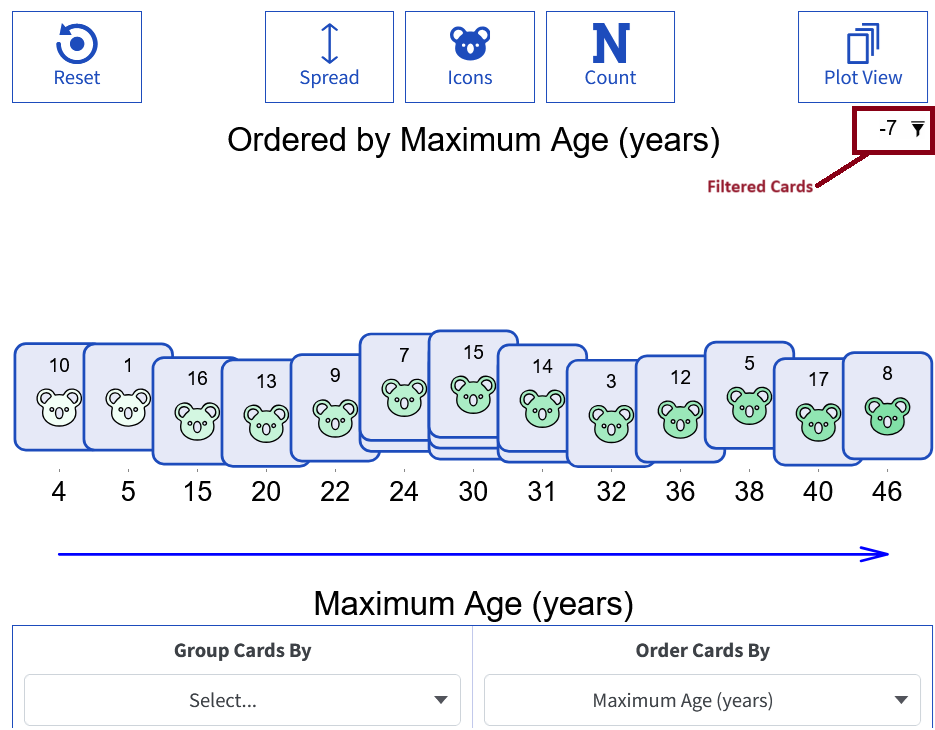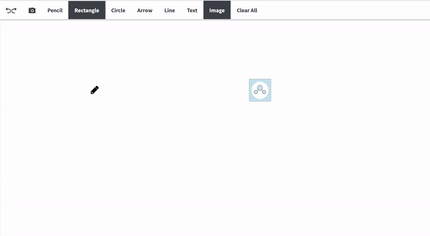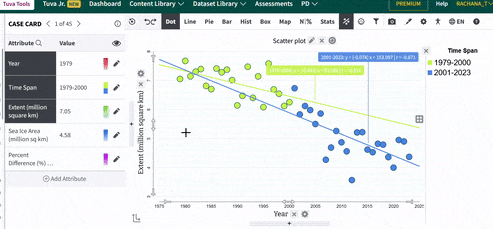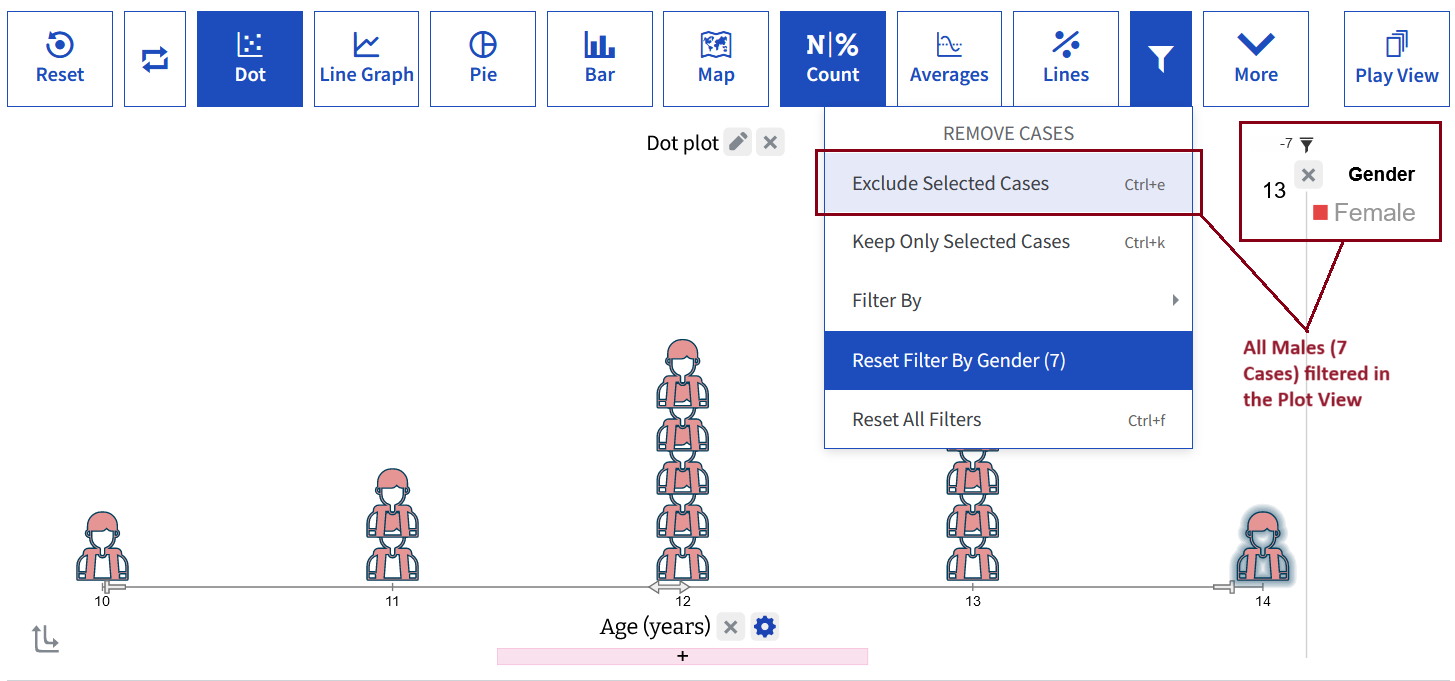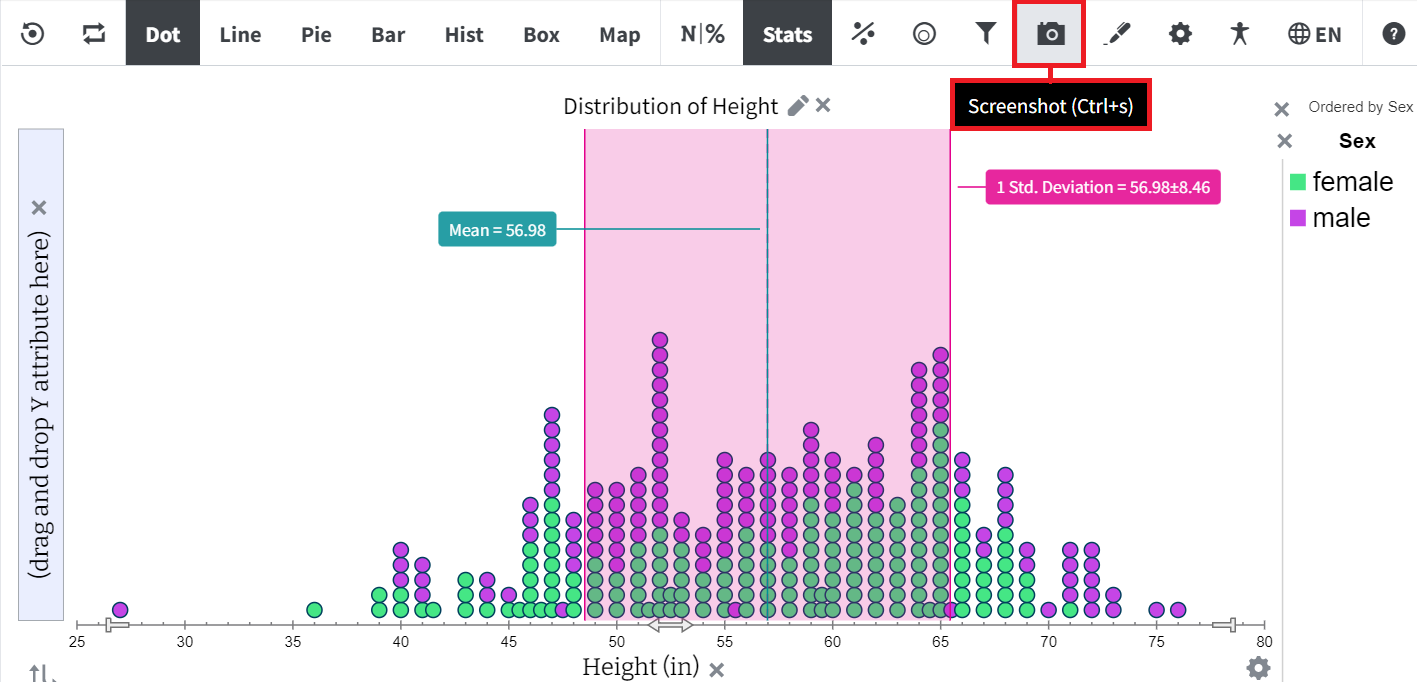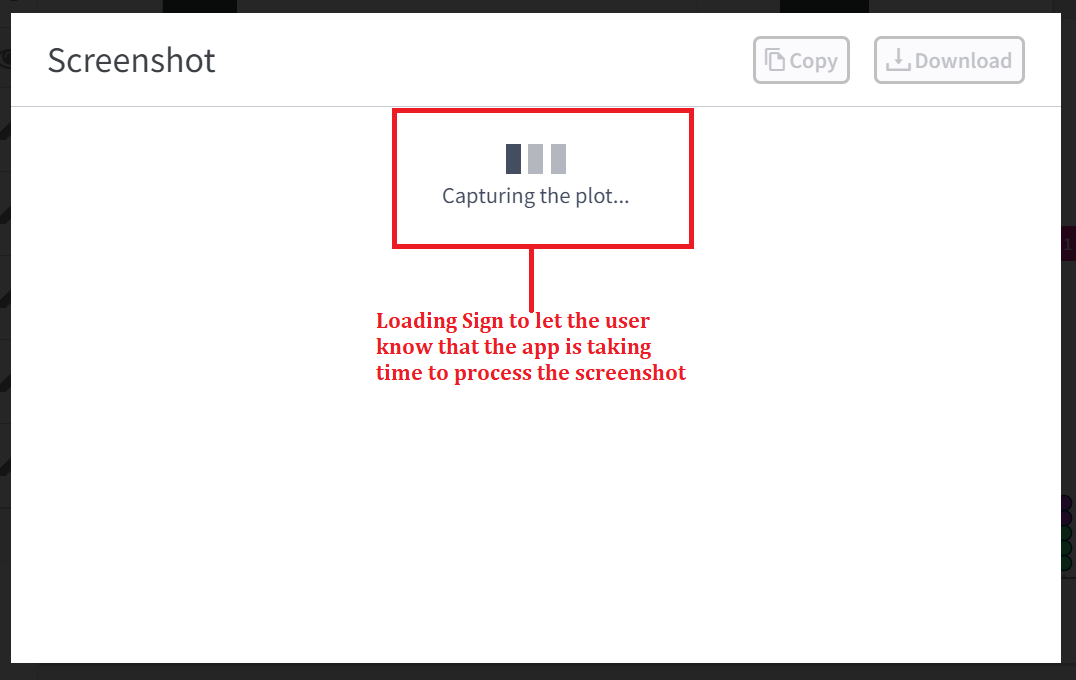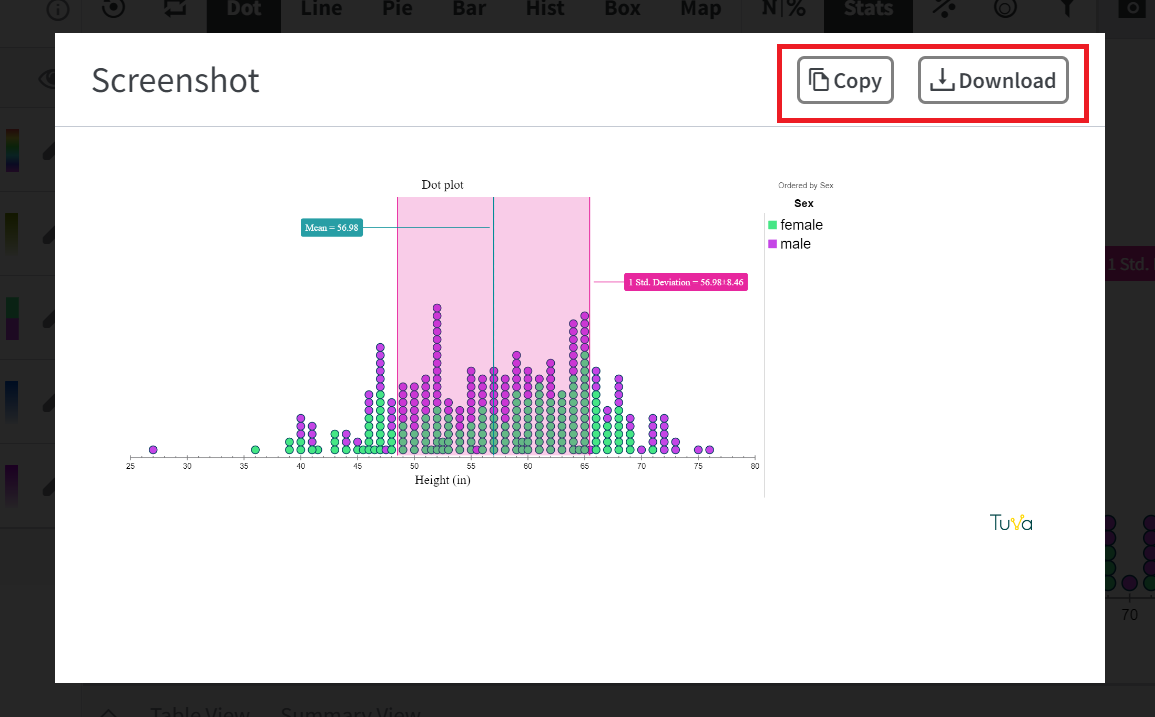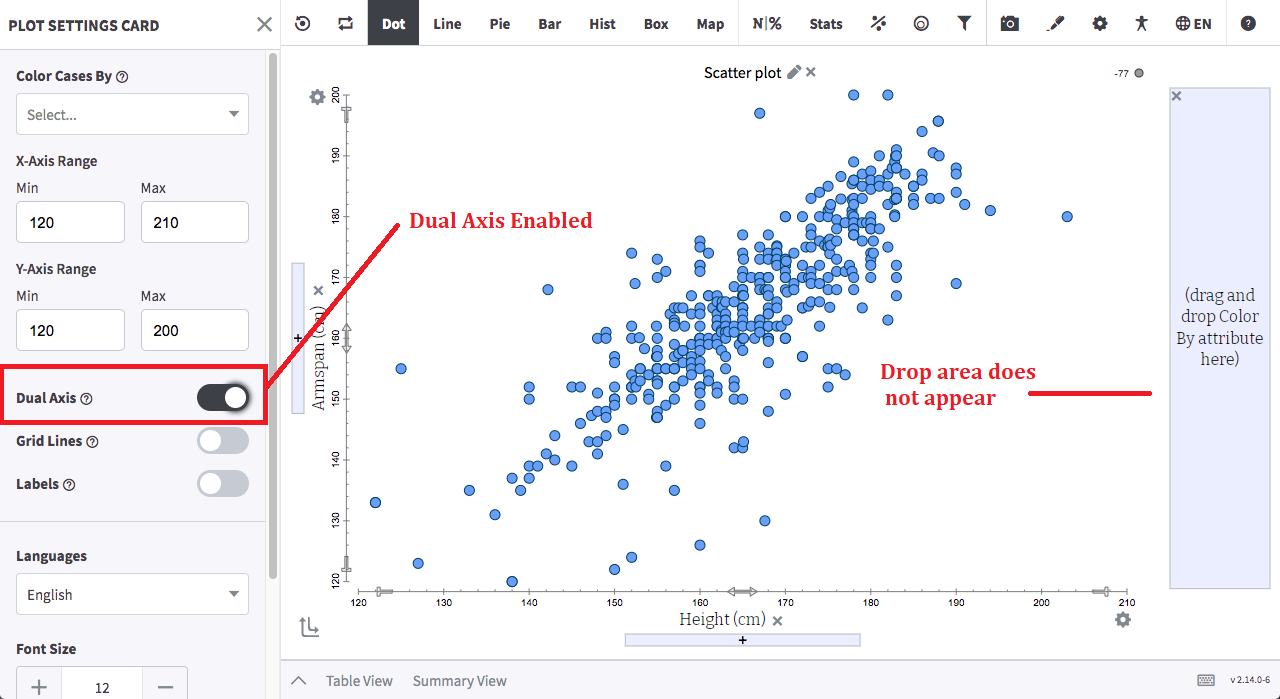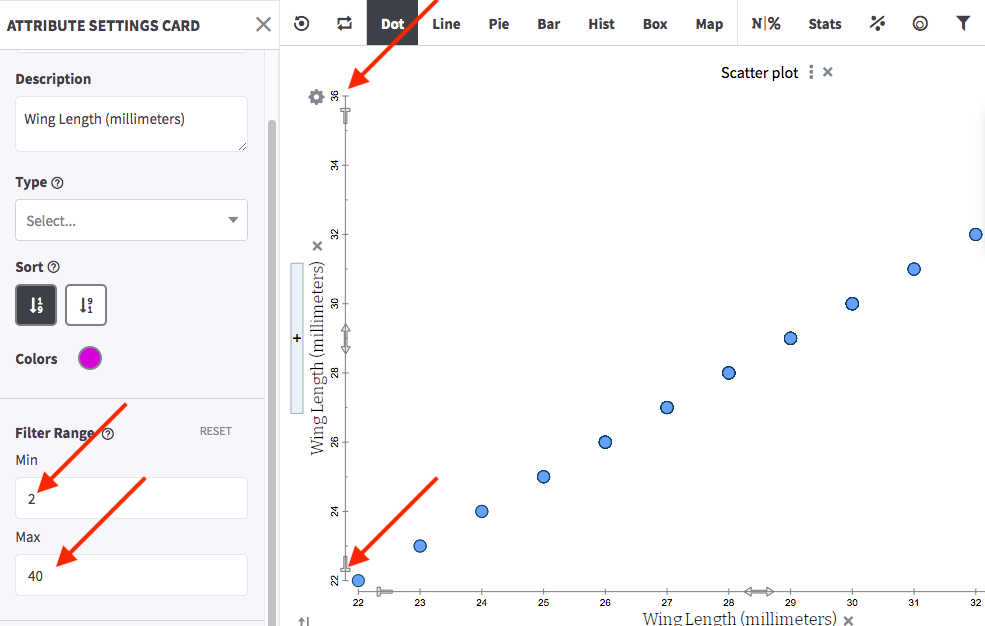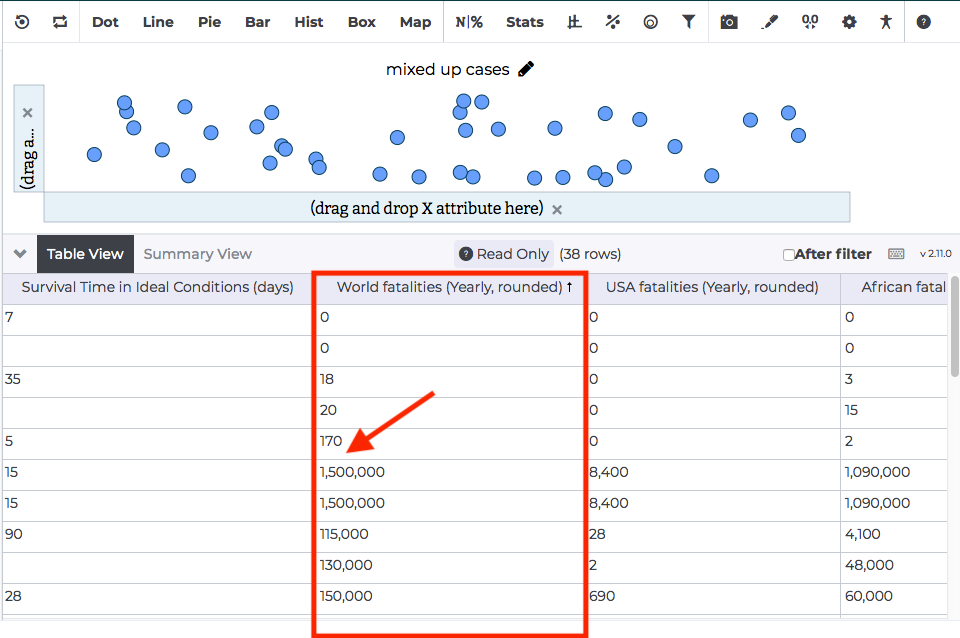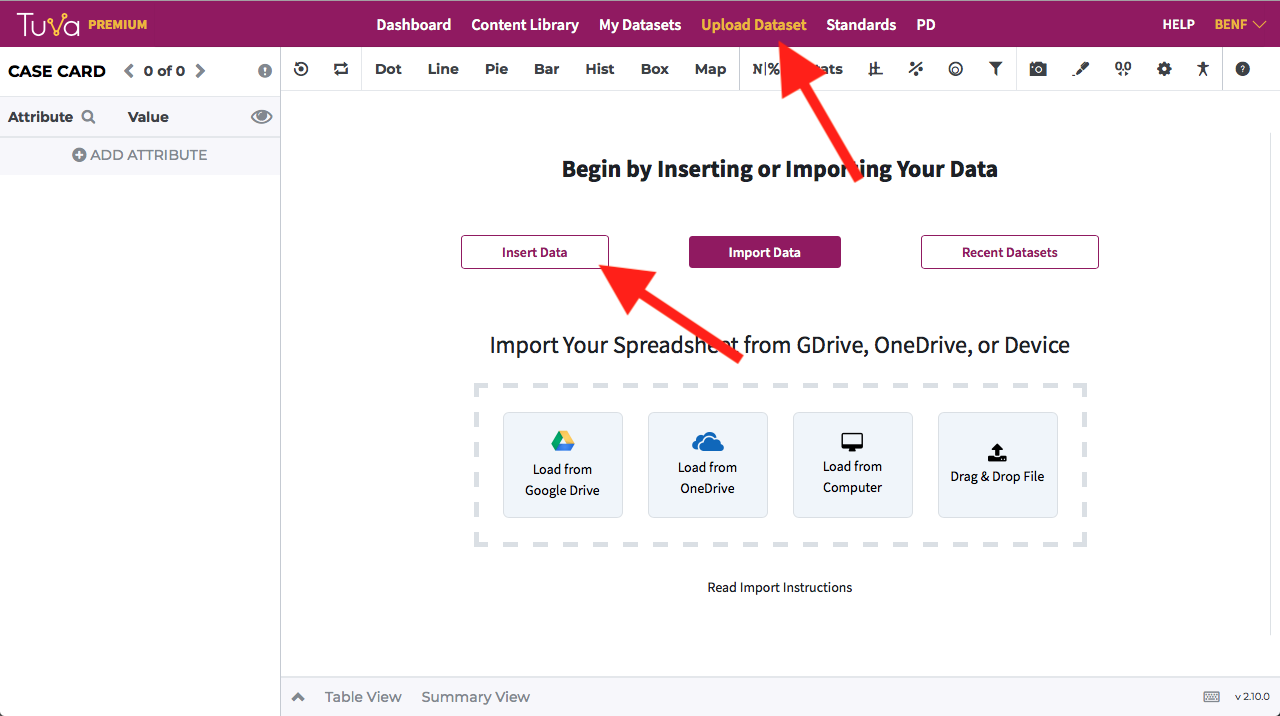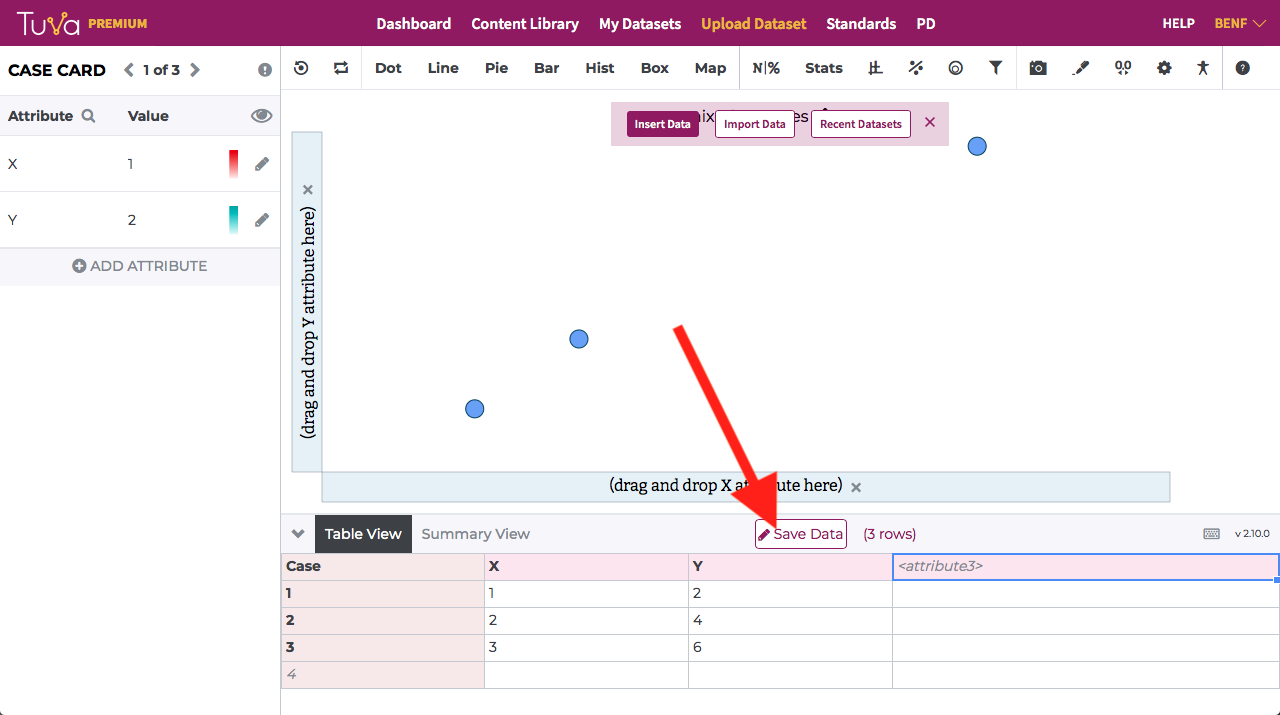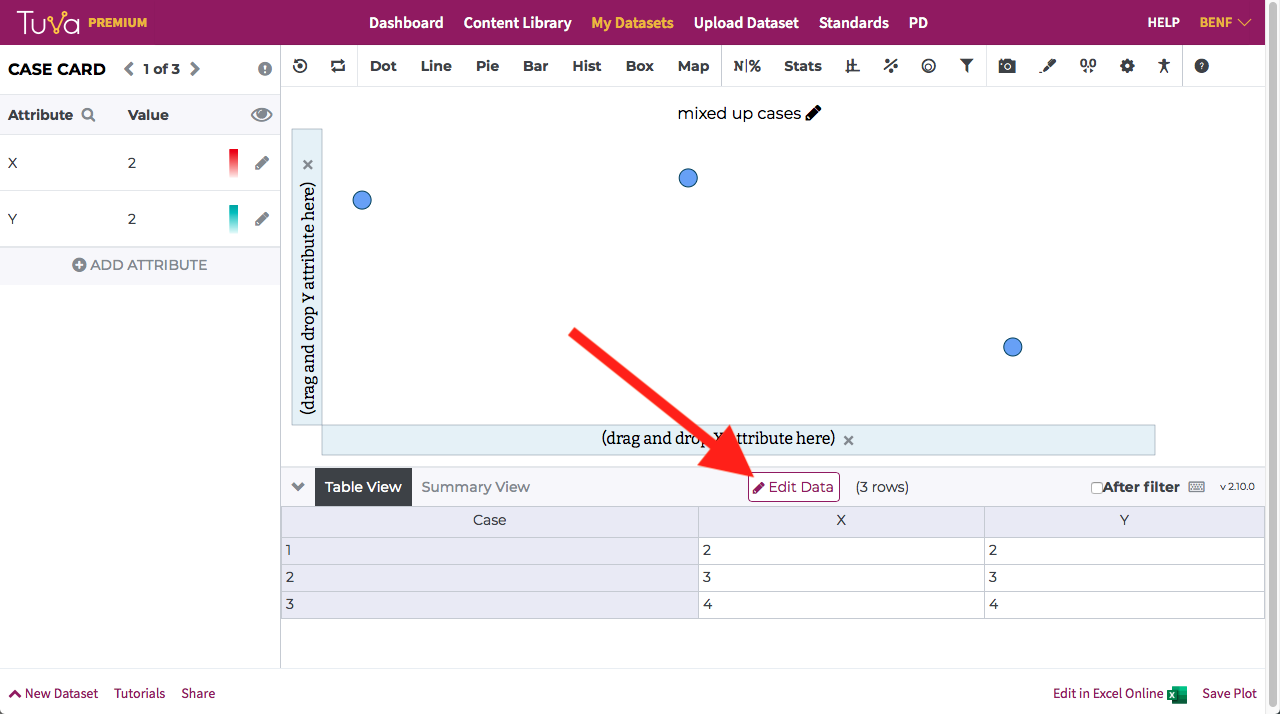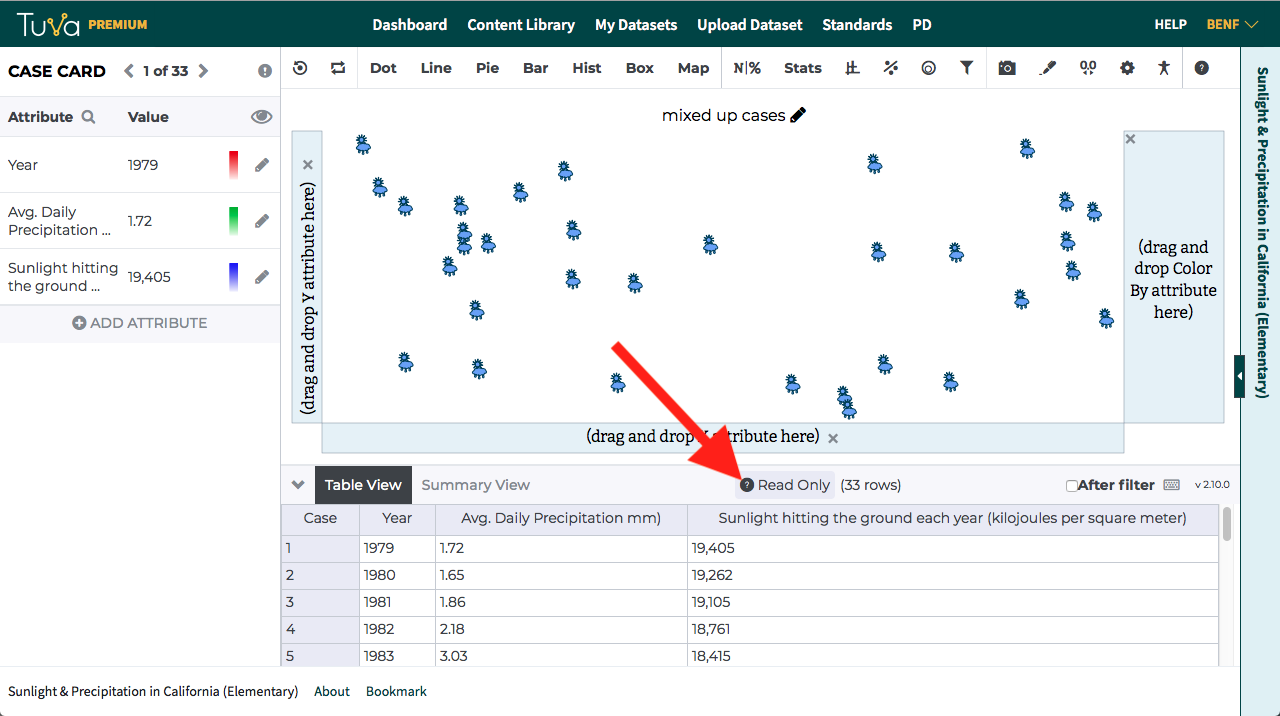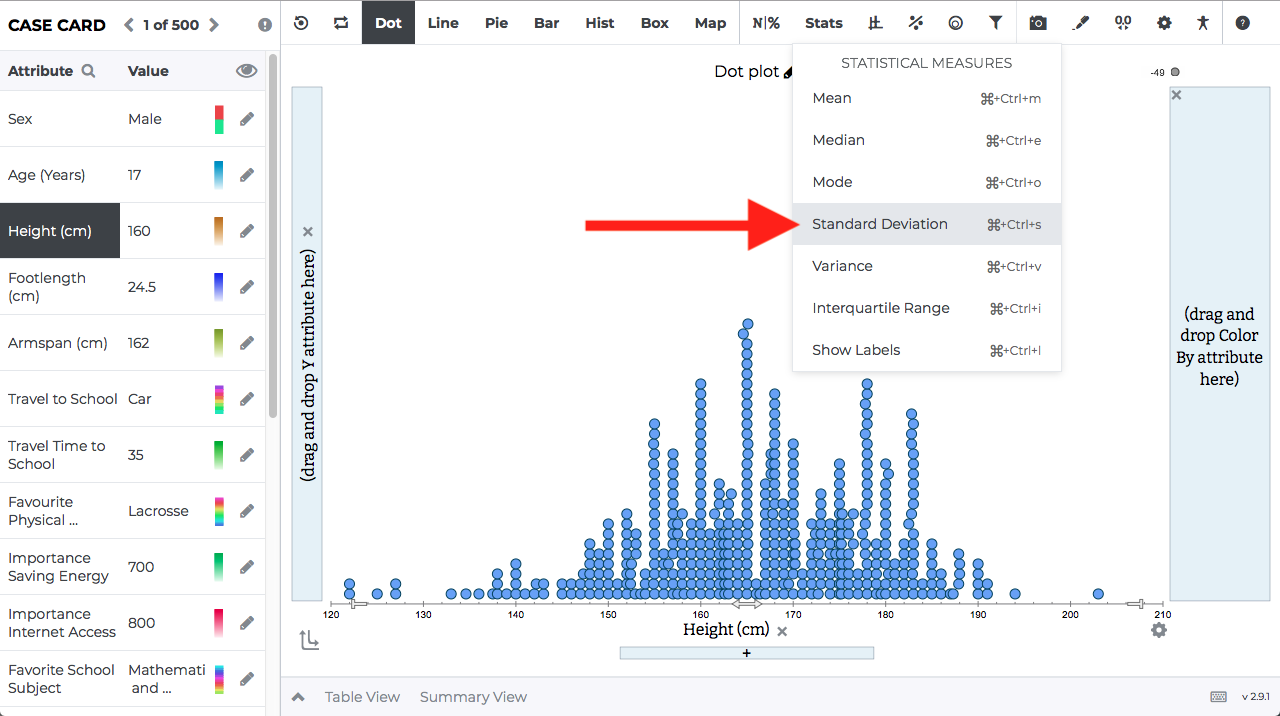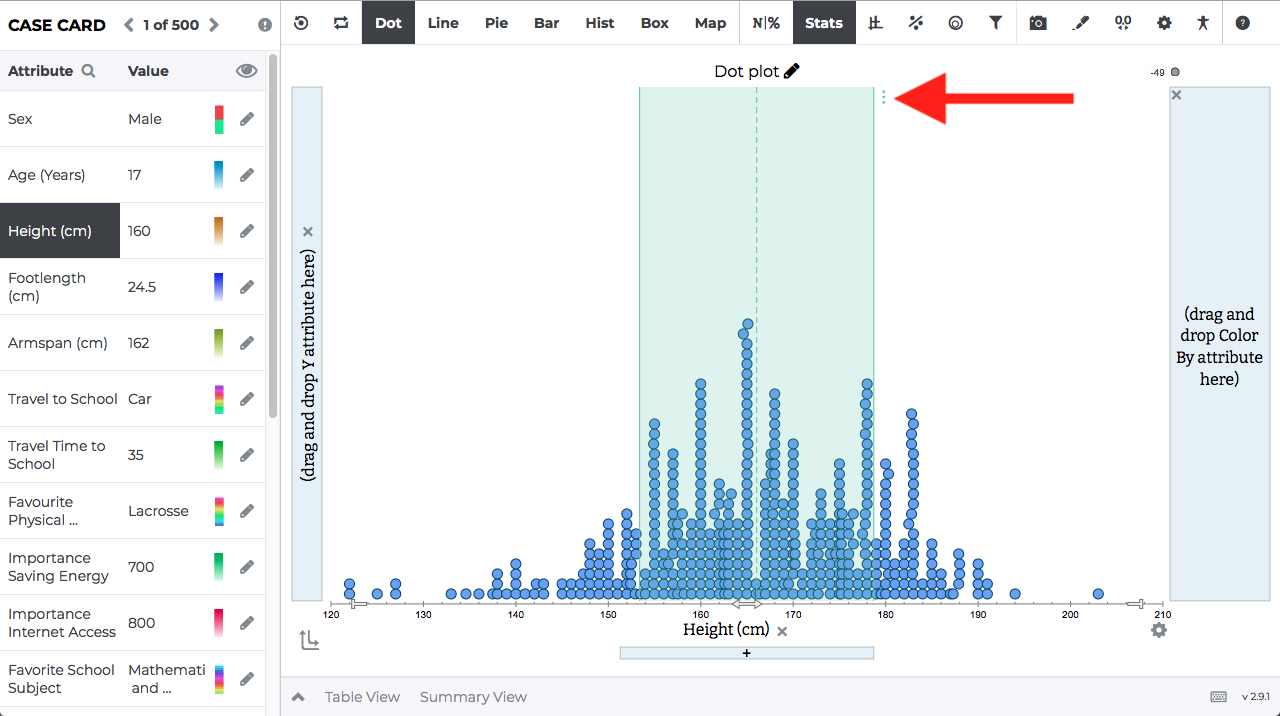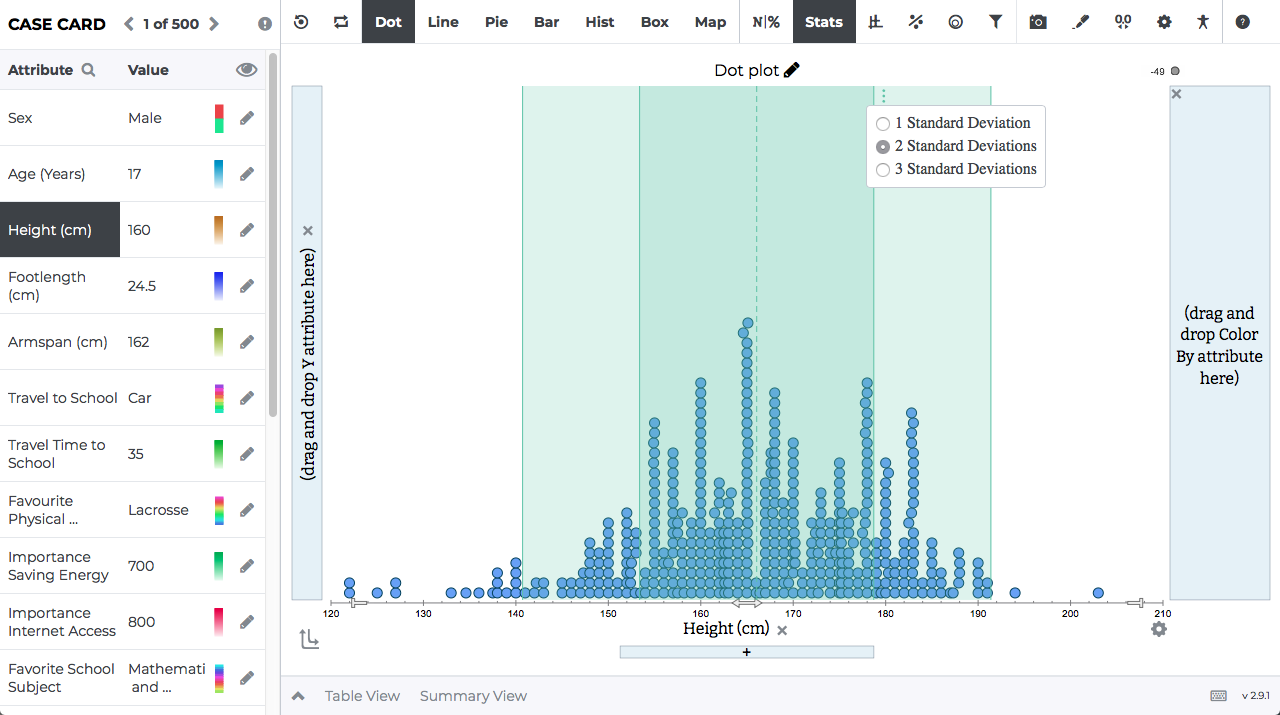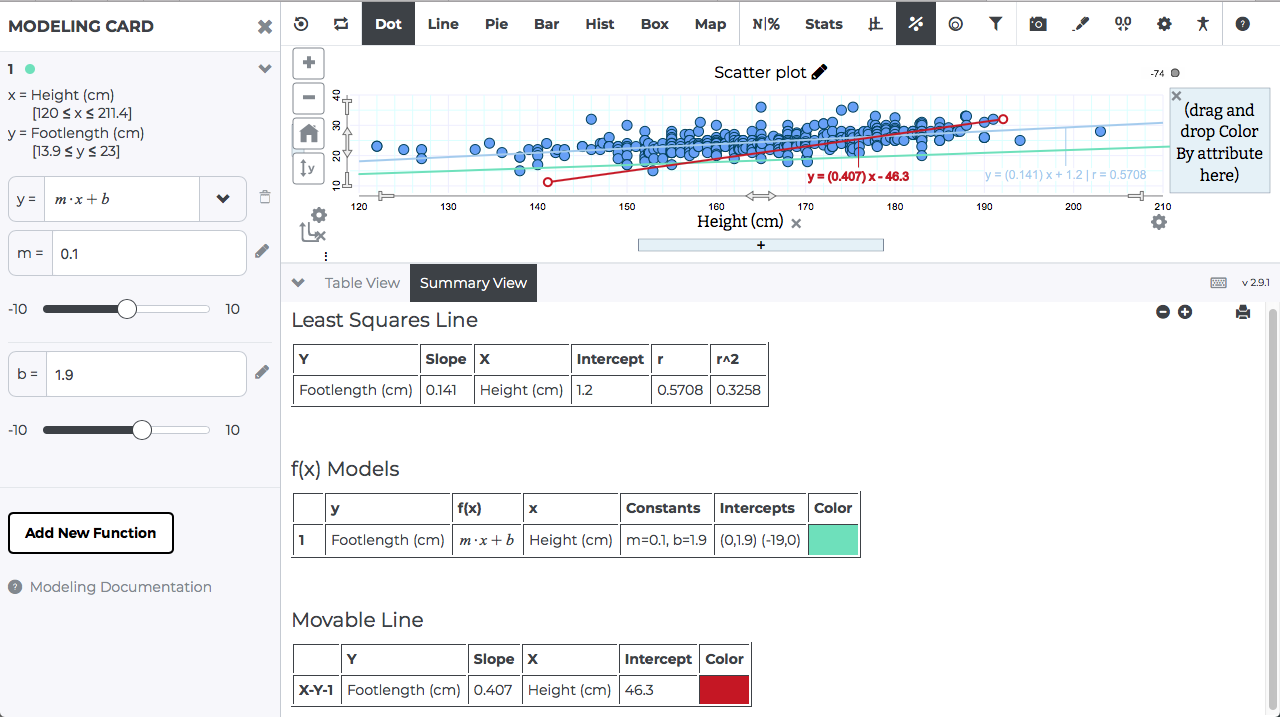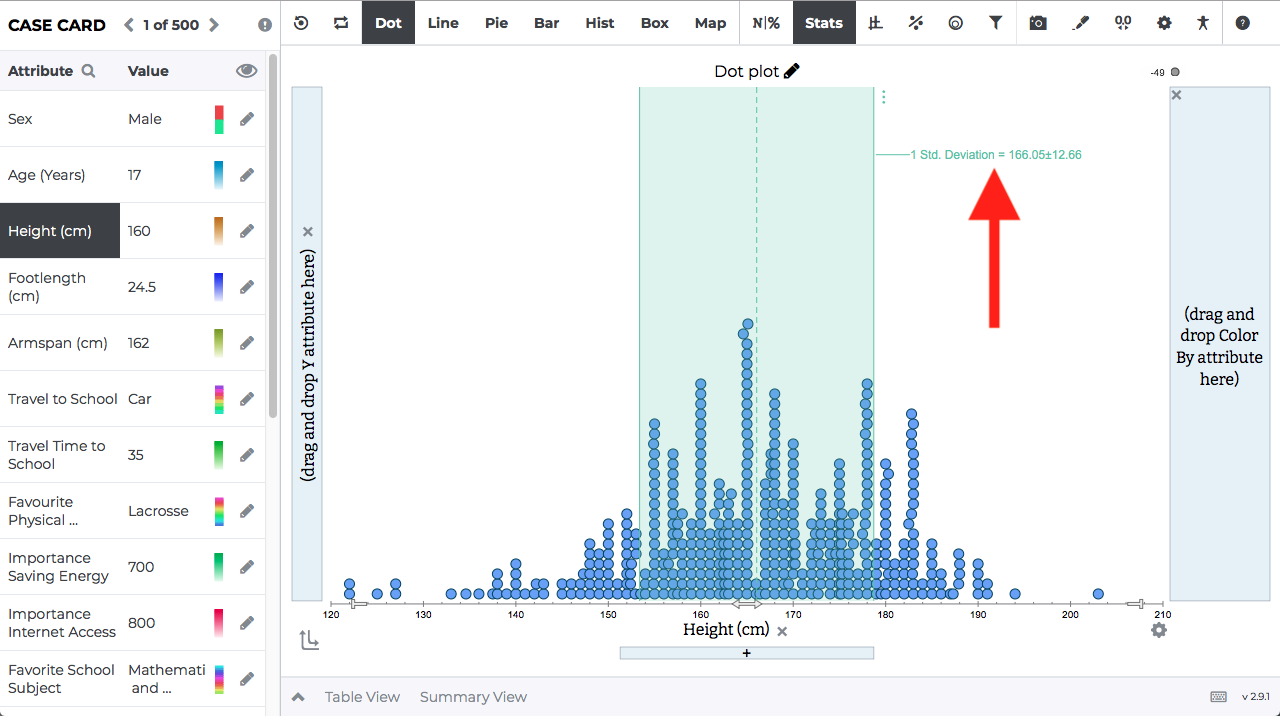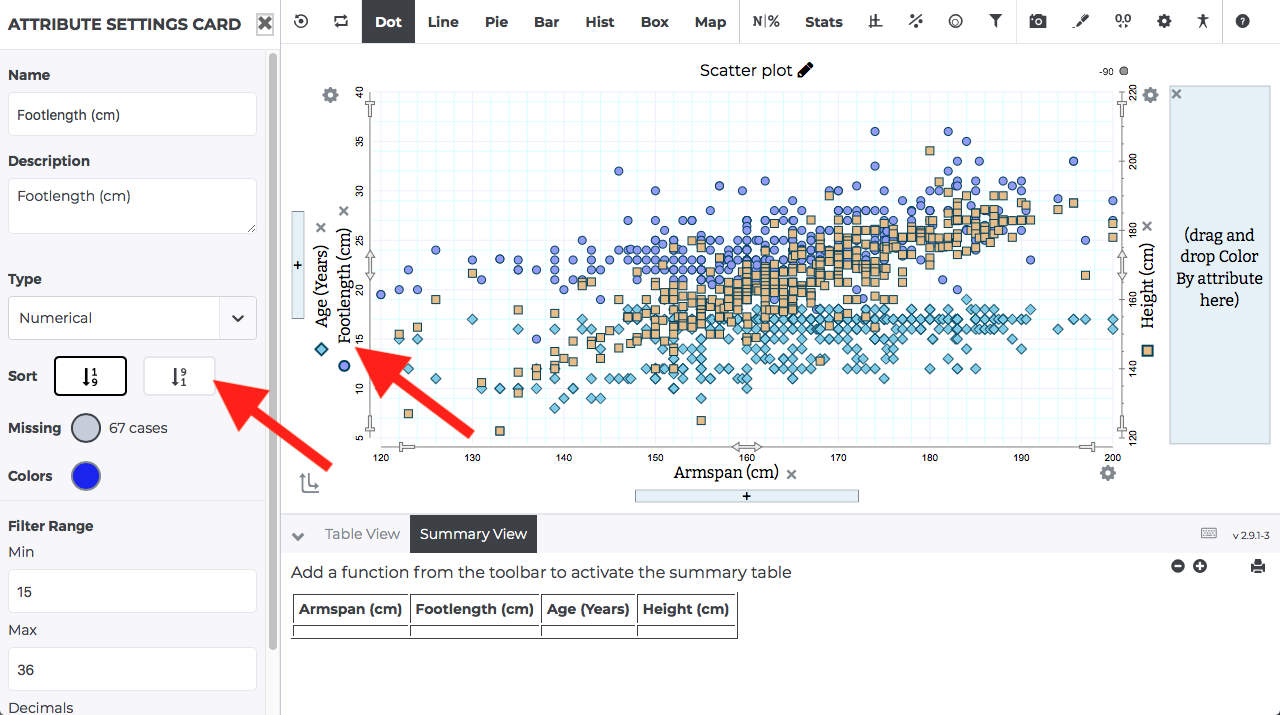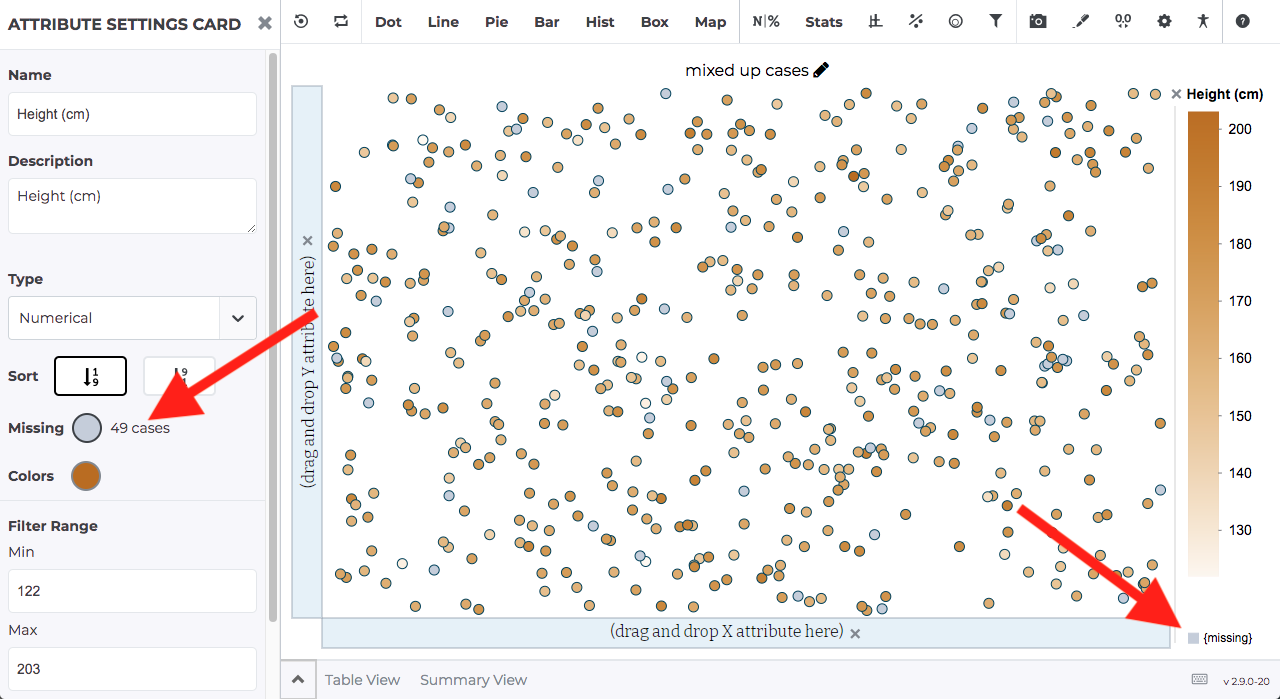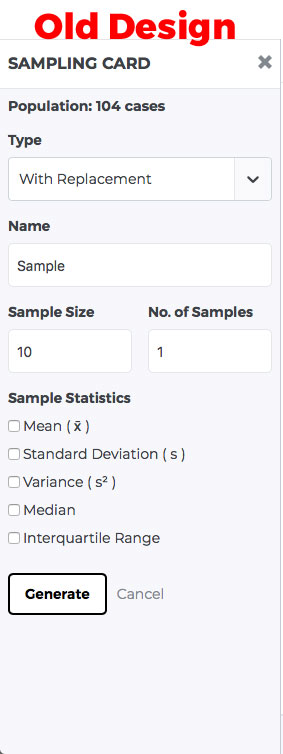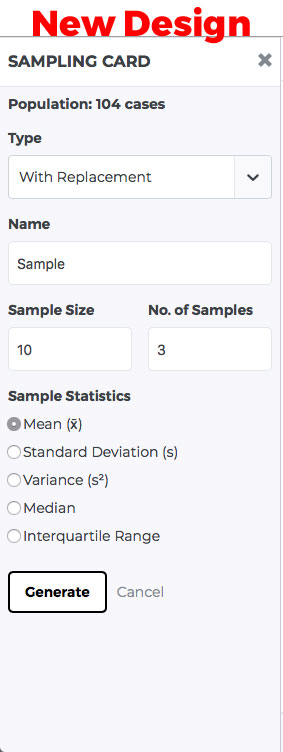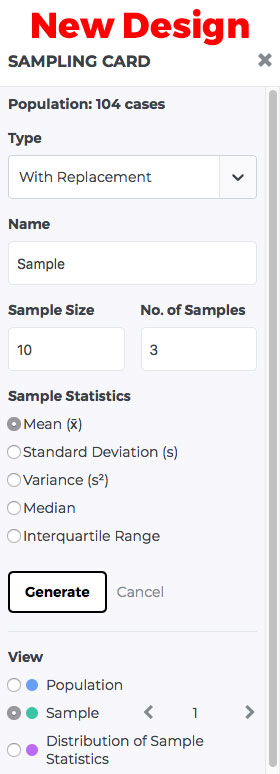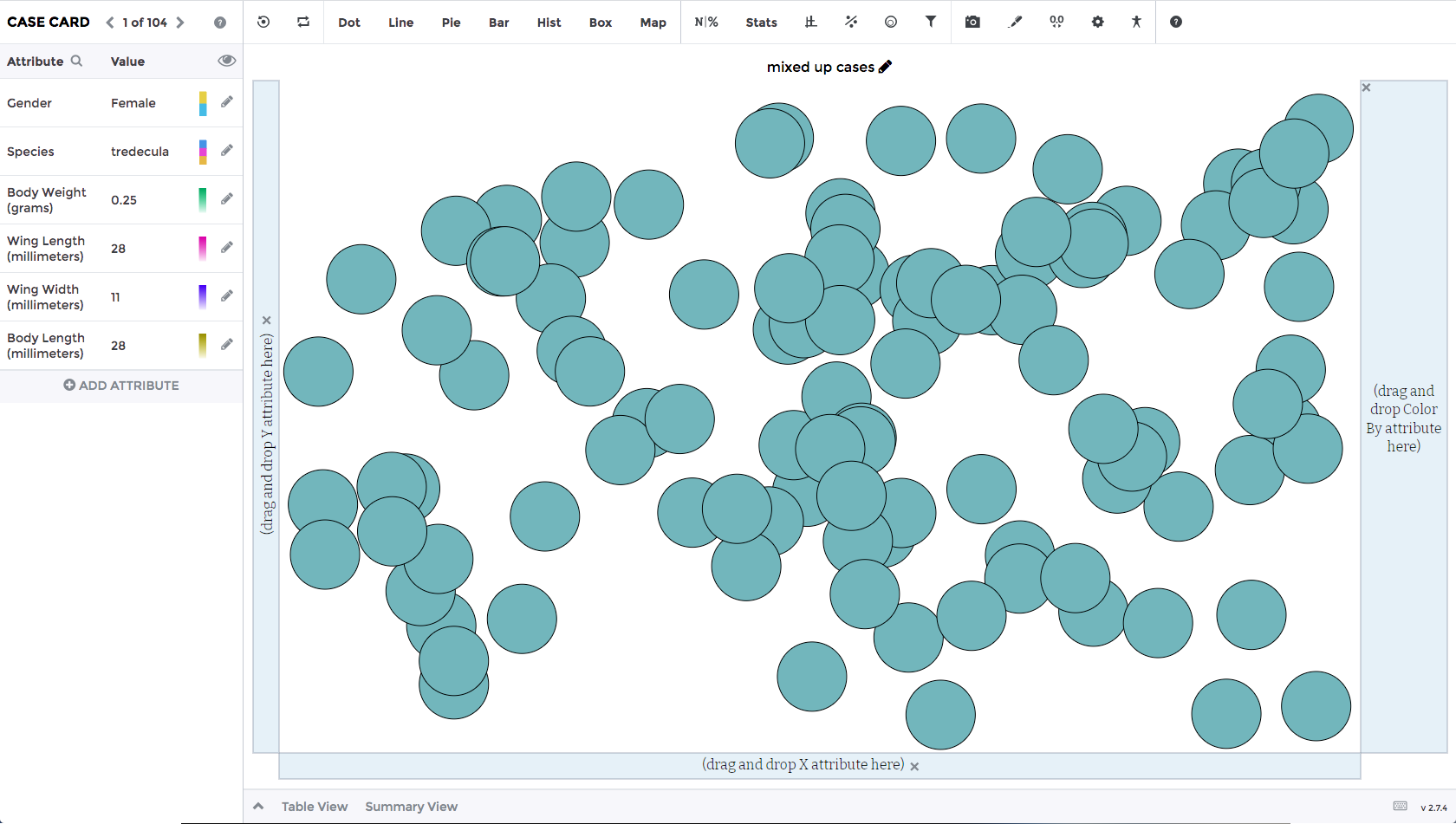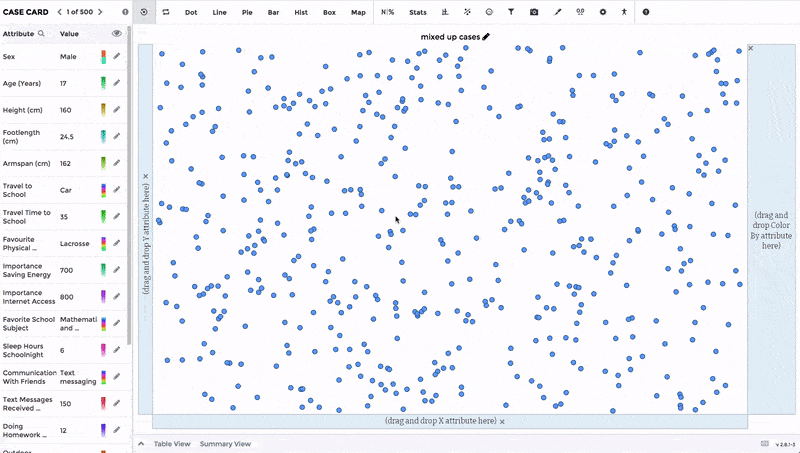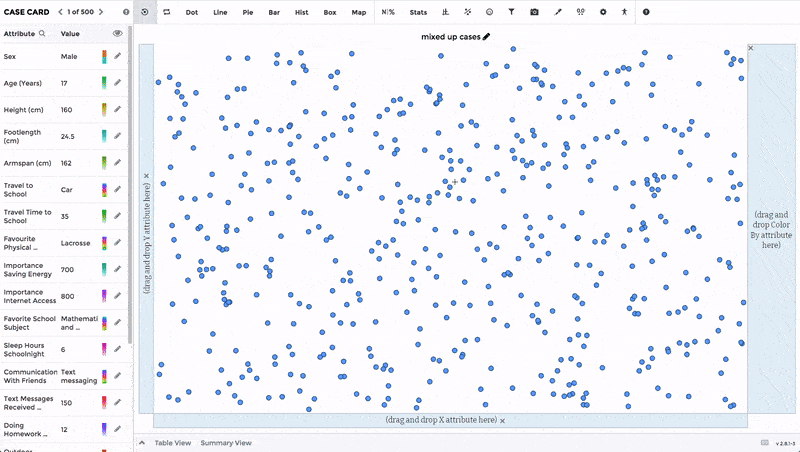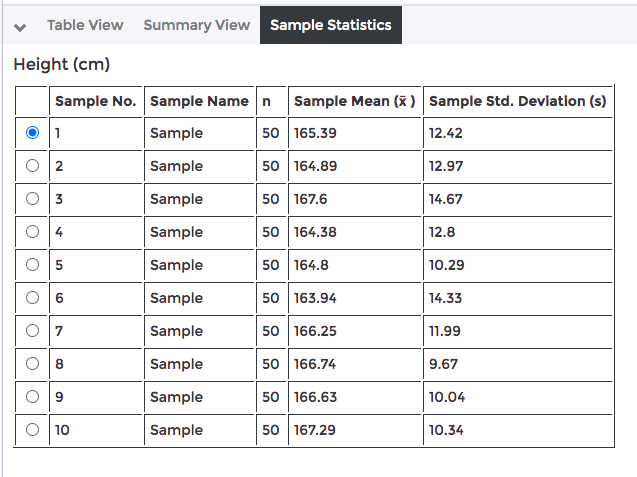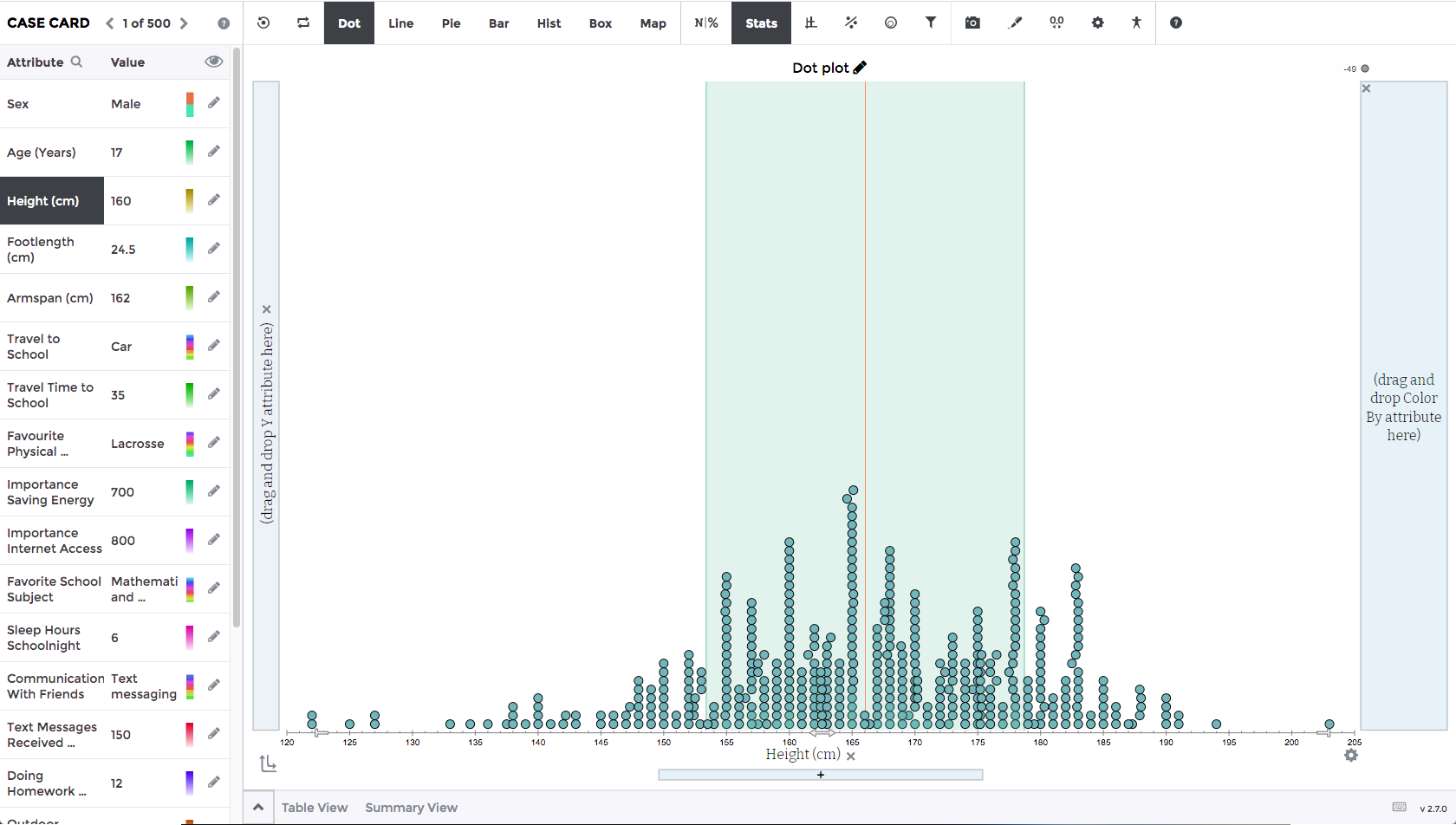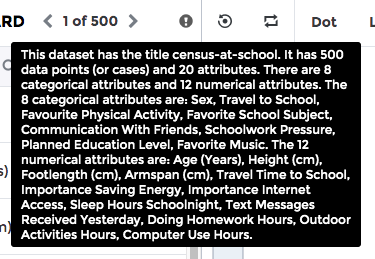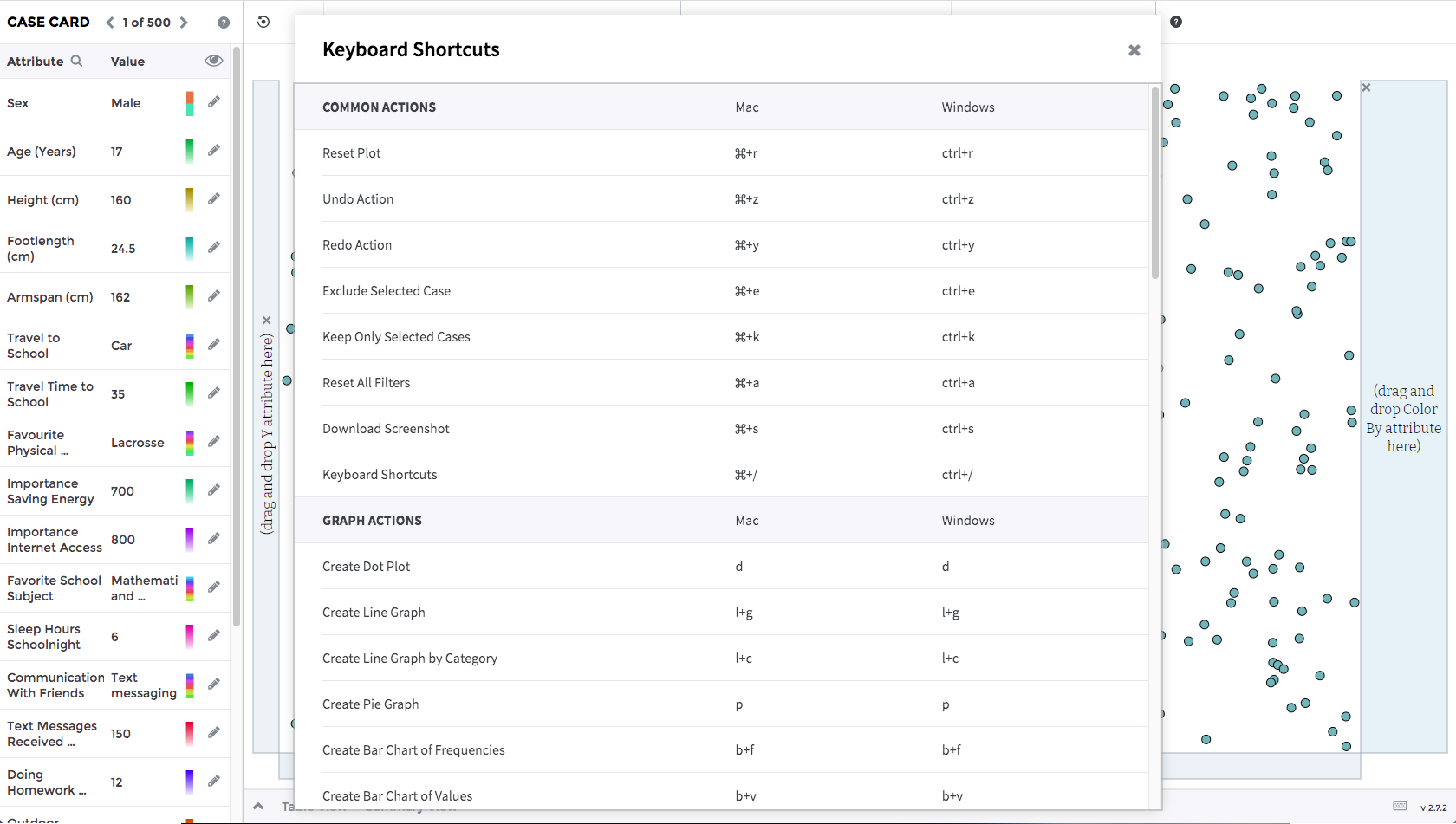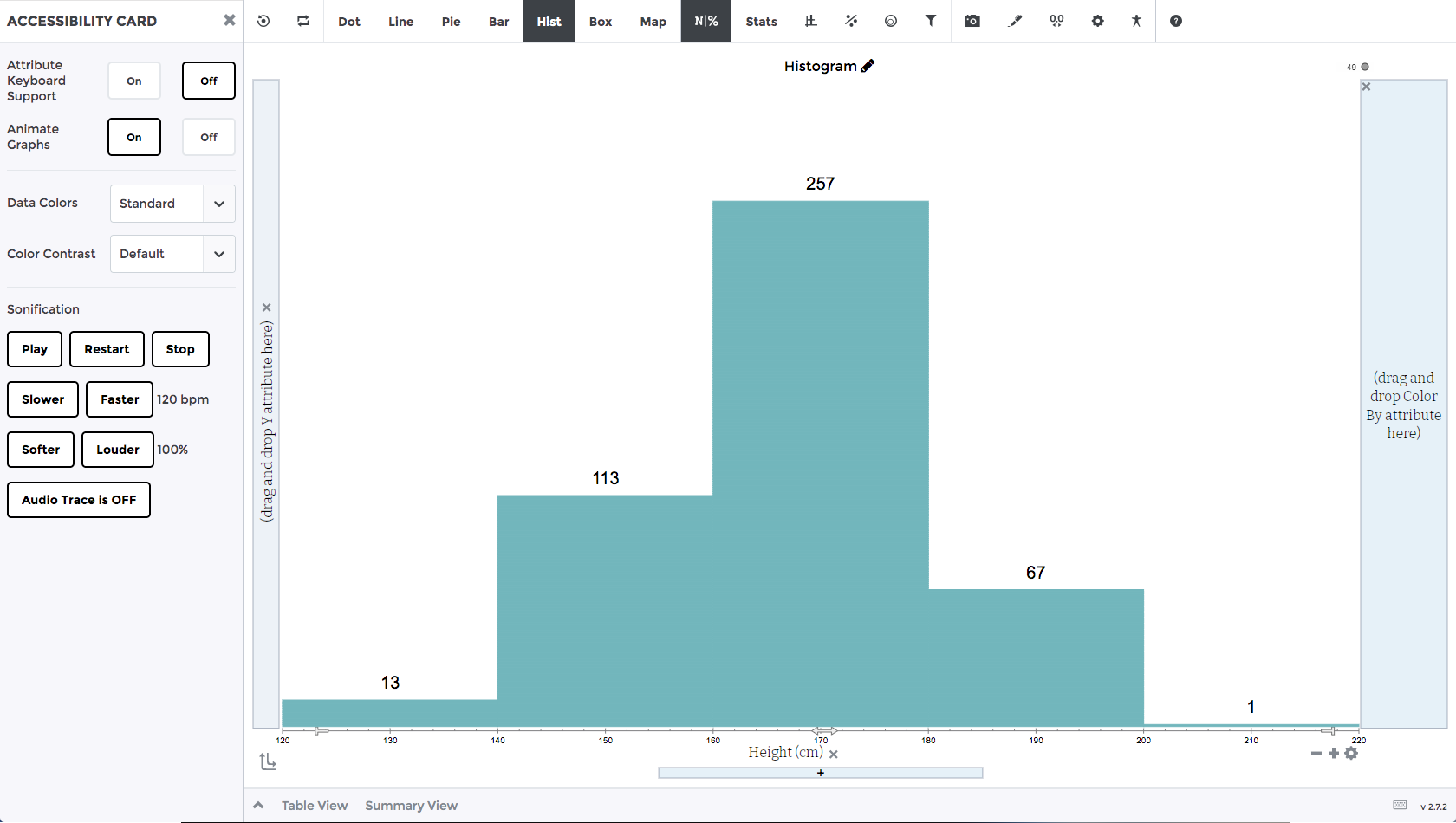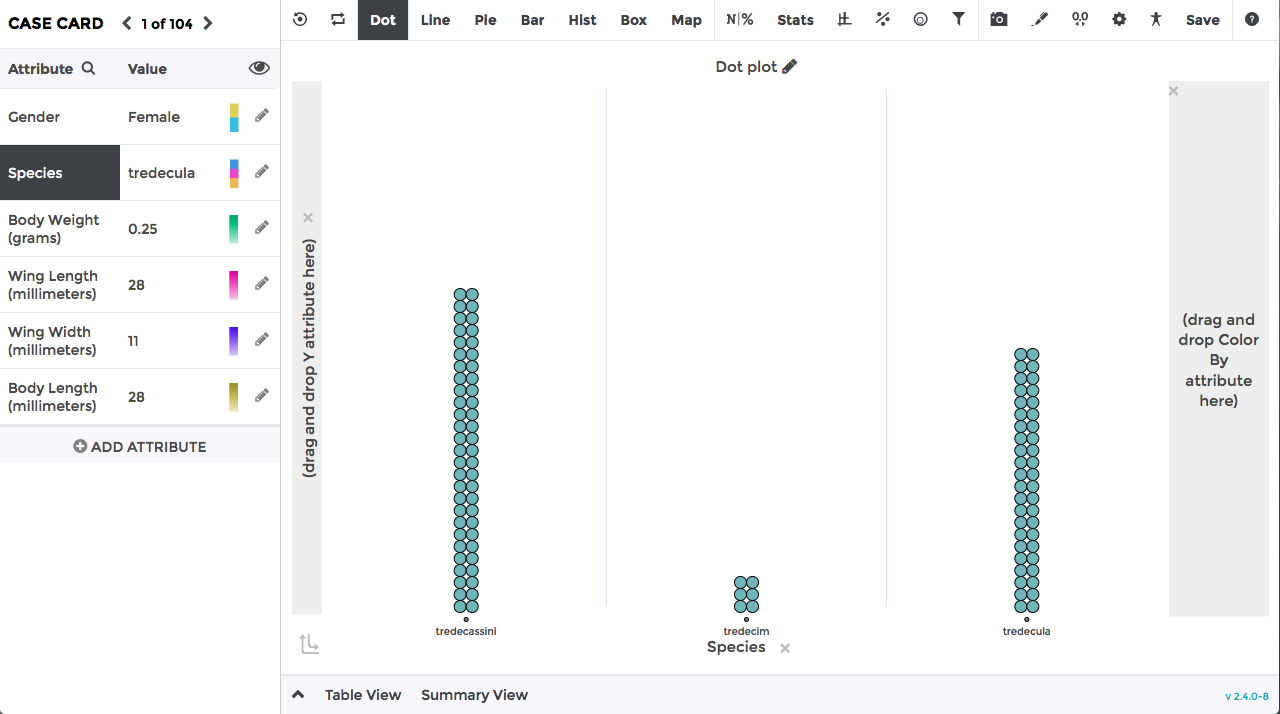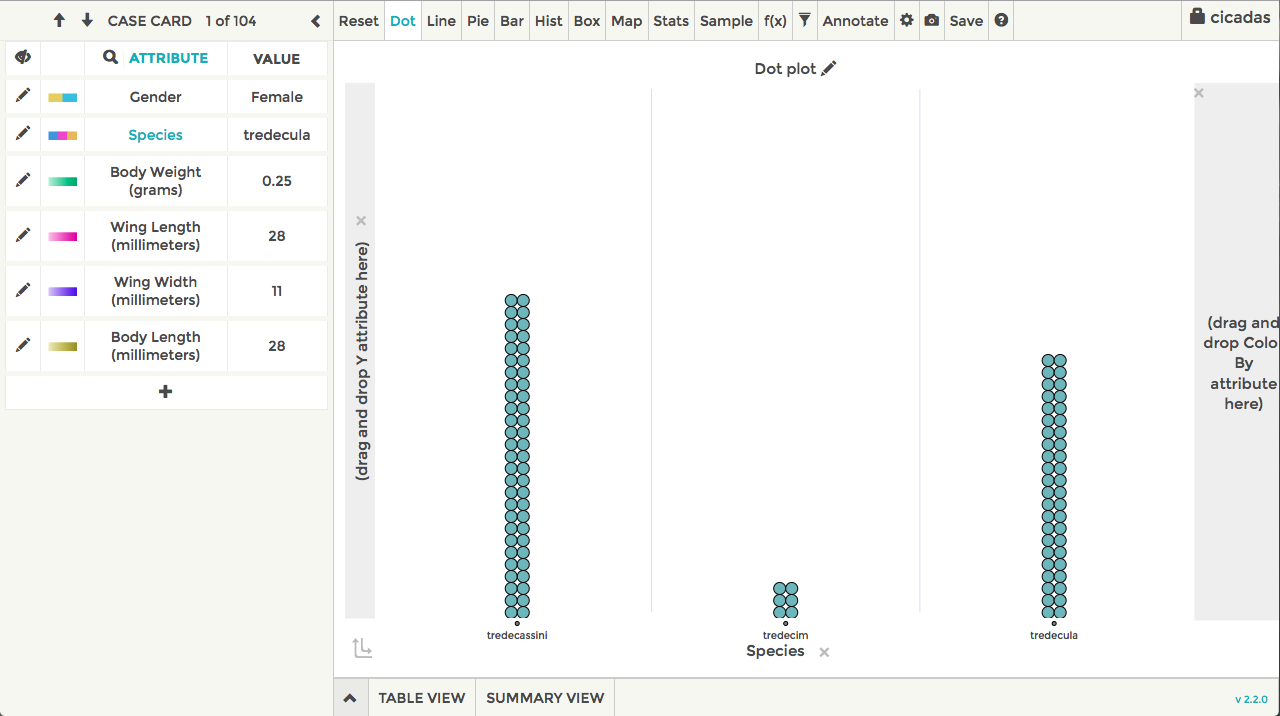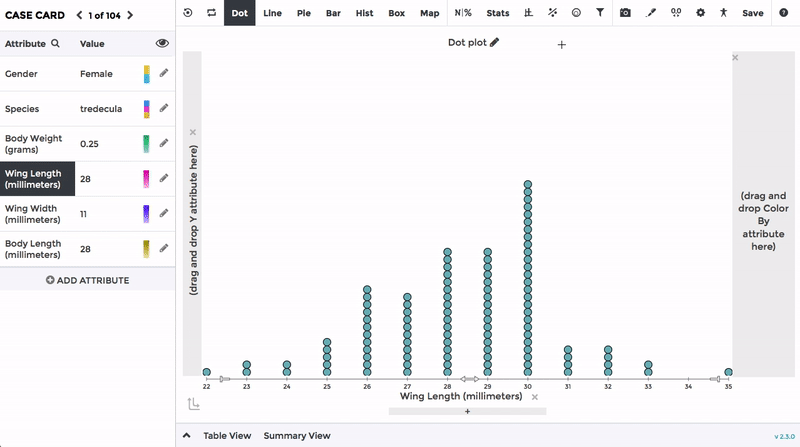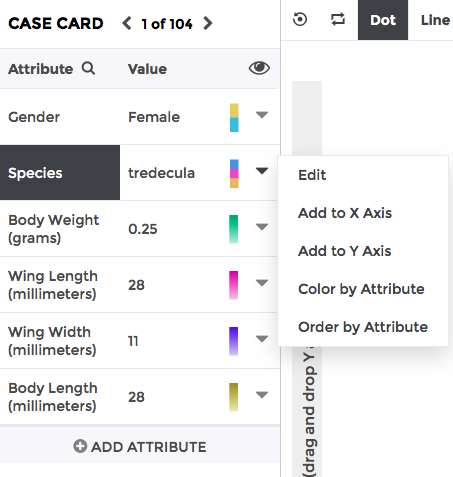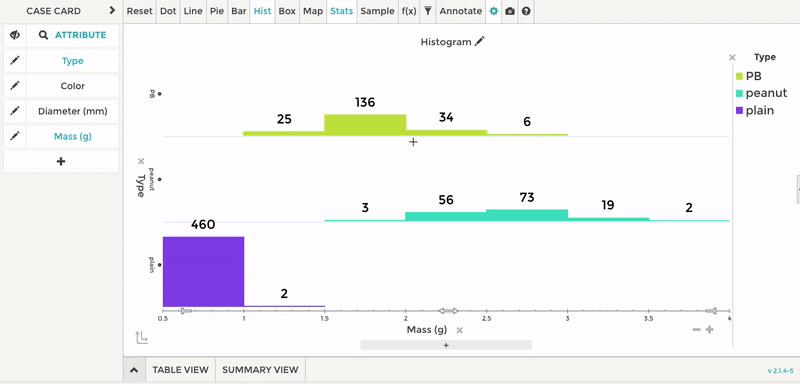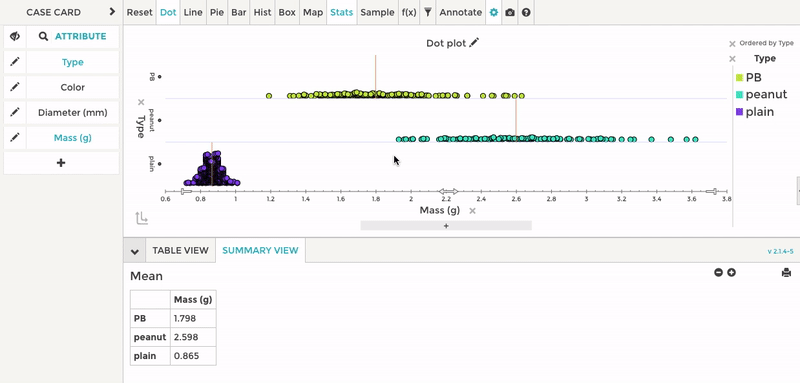Release 3.6.0
Version 3.6.0 of Tuva Tools delivers major upgrades to both data exploration and authoring. Key highlights include the new Ruler Tool for measuring and comparing data, Show Squares for nonlinear models to reinforce curve-fitting concepts, and annotation tools with a Dummy Card in Play View for richer authoring. This release also adds fractions support in pie charts and includes important fixes for fractional plotting, axis scaling, and embedded plot dimensions.
-
Flexible Ruler:
We have introduced the Ruler Tool, giving students a tangible way to interact with data on graphs. With this tool, learners can:
Measure the distance between two points on a scale.
Compare a single point or cluster of points to the rest of the dataset.
Identify unusual values more intuitively.
Here are the steps users can take to access and use the ruler:
Step 1: From the toolbar, select Add Ruler on X or Add Ruler on Y from the Model Data menu to add it to the plot.
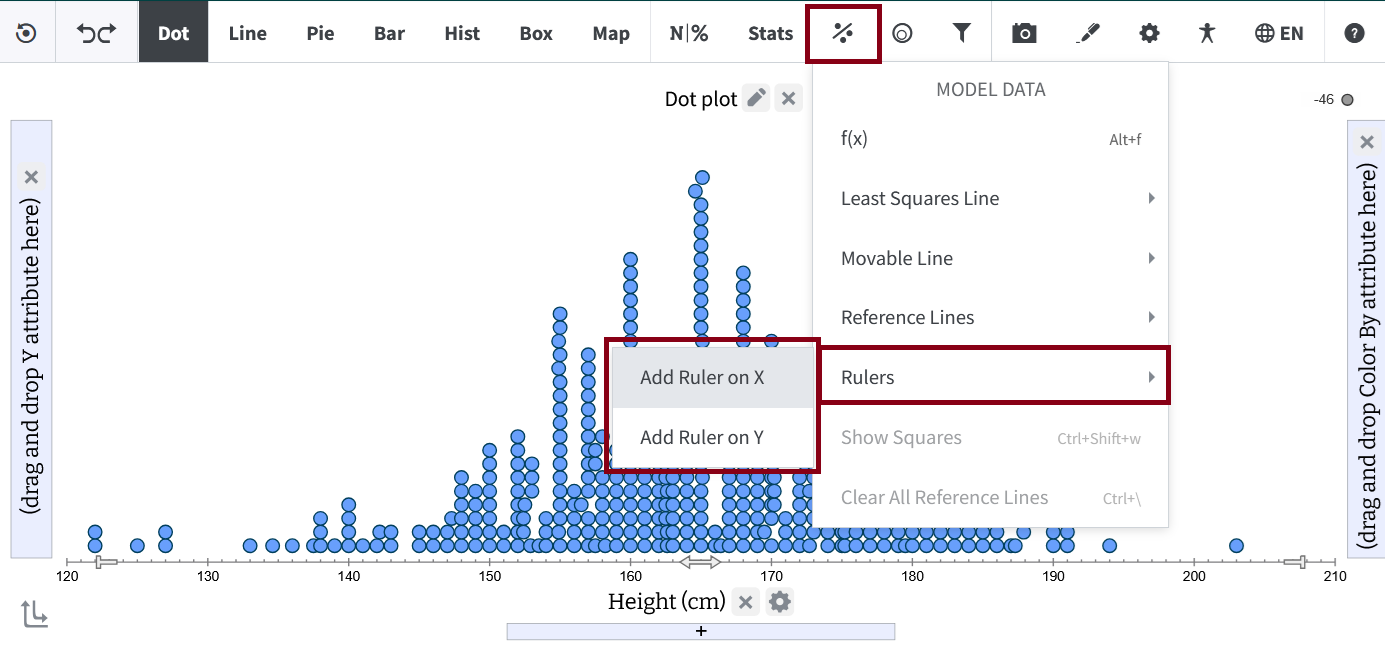
Step 2: After adding the ruler to the graph, drag its handles to place it at the desired position.
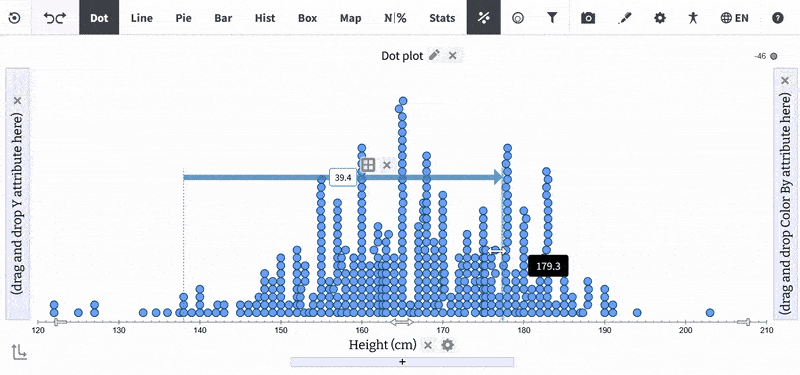
The ruler comes with its own context menu with the following options:
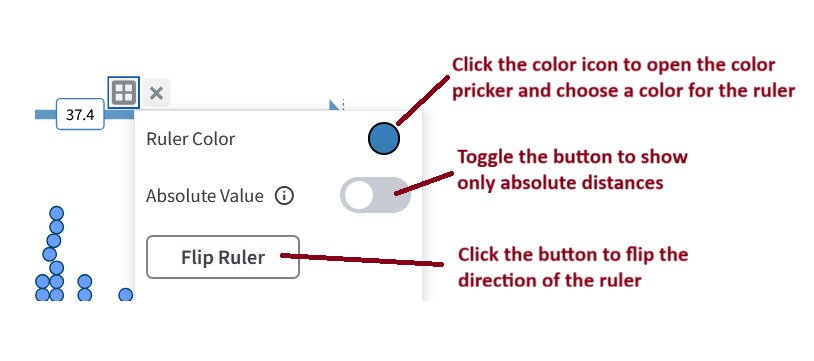
-
Show Squares for Nonlinear Models:
We’ve extended the Show Squares feature to support nonlinear models. This enhancement helps students intuitively understand curve fitting by visualizing each squared residual. When paired with the Sum of Squares display, learners can clearly see how changes to the model affect total error—reinforcing the concept of error minimization in nonlinear model fitting.
After adding a nonlinear function in the Modeling Card, users can access the feature from the Model Data menu in the toolbar.
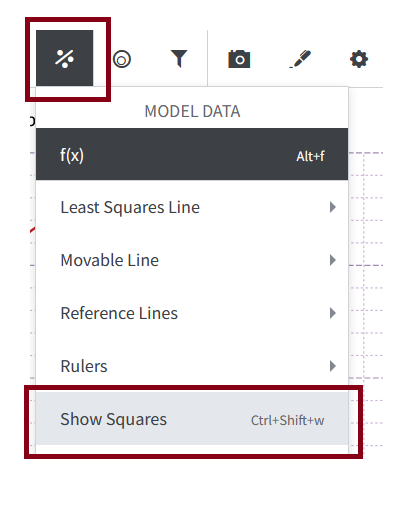
Once selected, Tuva displays squares for each data point, with each square representing its squared residual. This visualization makes it easier to see how well the curve fits the data.

If two functions are displayed in the graphing area, the squared residuals appear for the most recently selected curve. Selecting the other curve will switch the view, showing its squared residuals instead (only one curve’s residuals are shown at a time to reduce clutter).
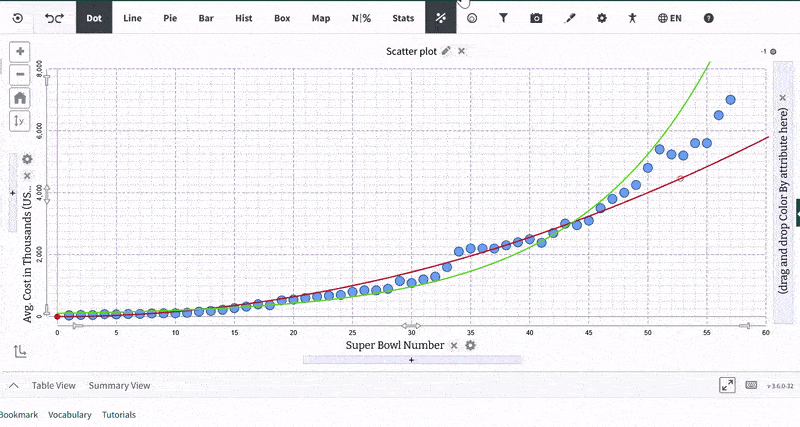
-
Annotations in Play View (Authoring Only):
We’ve added annotation tools in Play View in the Authoring environment, allowing authors to design tasks with visual scaffolds such as arrows, circles, and text to highlight patterns and relationships.

A new Dummy Card lets authors build activities around prediction, comparison, and reflection on missing or additional data—supporting richer, more intentional reasoning tasks.

-
Displaying Fractions on a Pie Chart:
We’ve added support for fractions in case-based datasets: when data values are fractions, each pie section now displays its sum as a fraction.
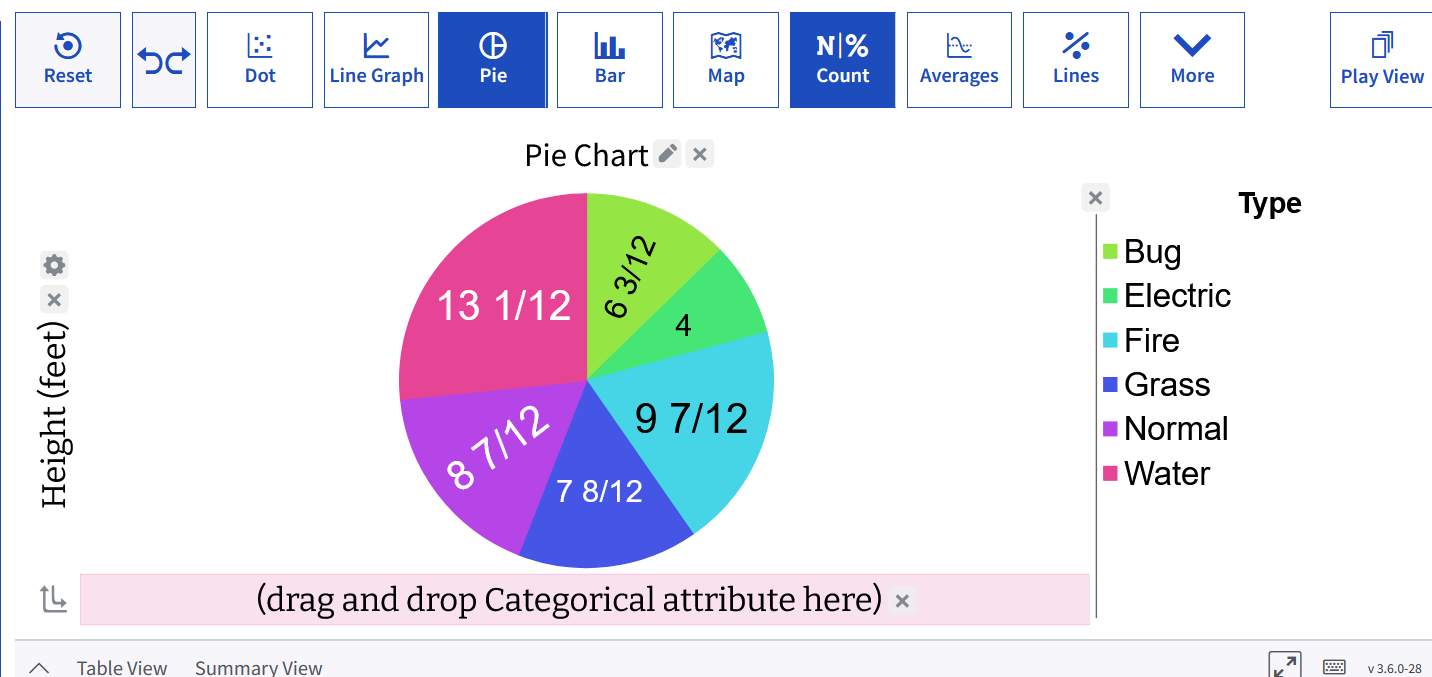
For summative data, the actual fraction values are shown directly.

Bug Fixes
- Issue with Parsing Fractions:
We resolved an issue where attribute values such as 1/2, 1/3, 1/4, and 1/5 were unplottable and triggered a parsing error when added to the X or Y axis. These values now plot correctly.

- Derived Attribute:
We resolved an issue where the actual range of a derived attribute (e.g., 0.268 to 0.378) was not reflected on the Y-axis. Previously, the axis was locked to a default 0–1 range and did not respond to metadata or Plot Settings changes. The axis scale now adjusts correctly to the attribute’s true range.

- Embedded Plots Dimensions Issue:
Addressed an issue where plots embedded inside an iframe were not drawn to the correct dimensions. While initially reported for box plots, the issue affects other plot types as well. We’ve implemented a partial fix and further improvements are in progress.


